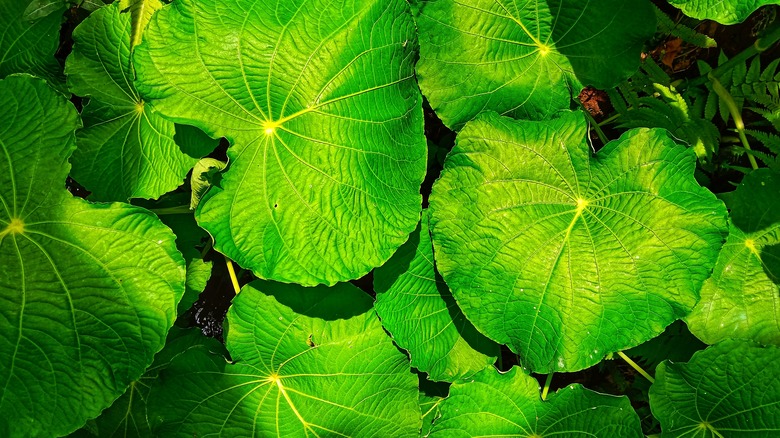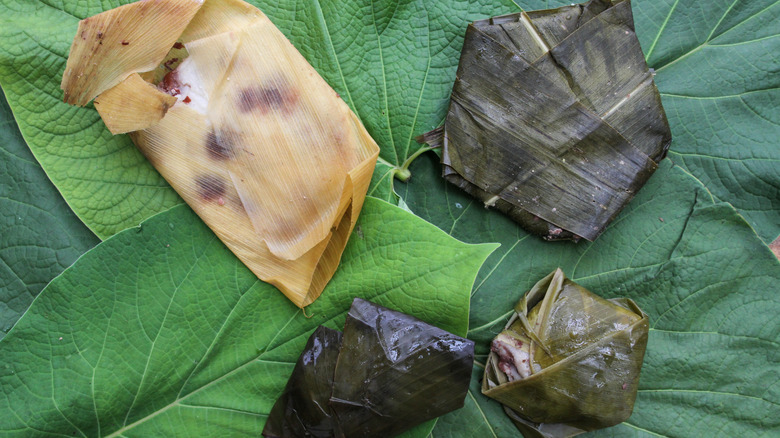Read This Before Cooking With Hoja Santa
Trek into the humid, tropical regions of southern and eastern Mexico, Central America, or even the arid lands of the southwestern United States, and you'll find hoja santa, an herb with "dinner plate-sized, heart-shaped leaves" (per Specialty Produce). Hoja santa, or "sacred leaf" in Spanish — also known as yerba santa, Mexican pepperleaf, and root beer plant — emits a puzzling and peppery aroma, and when used sparingly, it can infuse dishes with hints of eucalyptus, sassafras, licorice, anise, nutmeg, mint, tarragon, and black pepper (via The Epicentre Spices). With these robust flavors, hoja santa leaves can even work as a possible substitute for fennel.
According to a popular legend from Mexico, this complex plant got its name from how the Virgin Mary would allegedly hang the washed diapers of baby Jesus to dry on the hoja santa's branches, which would "would not only serve as a clothesline but also impart a very pleasant aroma," food writer Victoria Challancin told the Los Angeles Times. Hoja santa is an essential ingredient in Mexican cuisine. This plant's enormous, fragrant leaves are used to flavor stews like pozole, sauces like mole, and when fresh, can serve as a wrapper for artisanal cheeses, fish, meats, or tamales (per The Austin Chronicle). Specialty Produce also reports that the ancient Aztecs, perhaps among the first civilizations to cultivate the plant, used hoja santa medicinally and ritualistically, spicing their bitter chocolate drinks with this tropical herb.
A little bit goes a long way with this aromatic herb
Along with imbuing many traditional Mexican foods with a unique and slightly peppery flavor, hoja santa has also been employed for medicinal reasons, termed tlanepa or tlanepaquelite in the indigenous Nahuatl language, which means "aromatic herbal medicine" (via Specialty Produce). Nonetheless, home cooks should be warned that when used in high quantities, hoja santa could potentially bring some negative effects, according to Pati Jinich, Mexican food writer, TV personality, and resident chef at the Mexican Cultural Institute in Washington, D.C. This is because hoja santa contains amounts of safrole, a carcinogen, and the same essential oil used to manufacture the mind-altering drug Ecstasy (per Saveur).
Only small amounts of this chemical are present in hoja santa, so when used carefully, there's nothing to worry about. The Mexican government's Ministry of Agriculture and Rural Development also claims that when used as medicine, hoja santa can help reduce fever and kidney inflammation, soothe stomach aches, prevent several gastrointestinal issues and respiratory problems, and may aid in combatting nervousness and insomnia due to its potential sedative properties. So next time you serve up some traditional Oaxacan green mole, remember that everything is good in moderation, and don't forget that pinch of hoja santa for an authentic flair.

